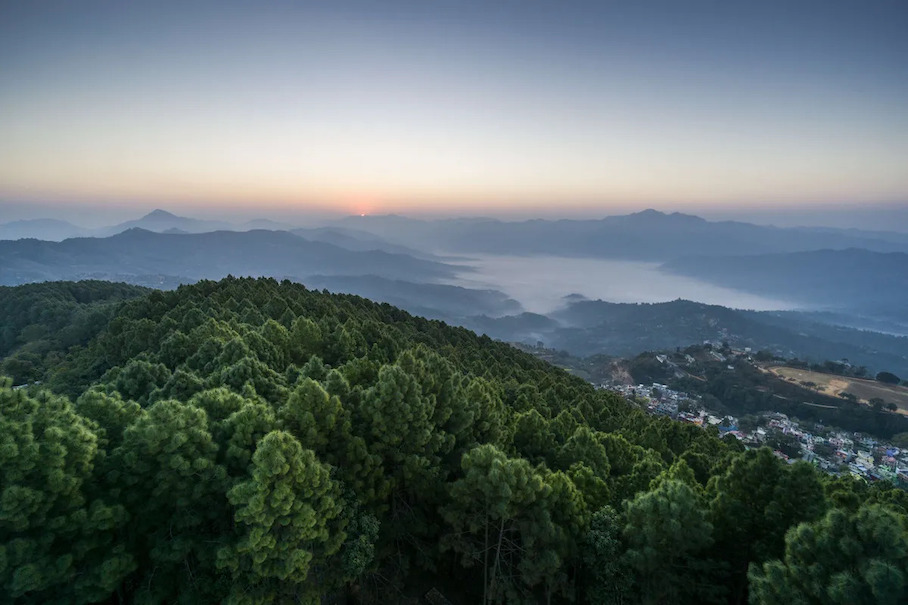Instead of planting trees, give forests back to people

Forests flourish under community control, and NASA has the satellite imagery to show it.
It might sound counterintuitive, but empowering locals to manage forests is an excellent way to preserve them. That strategy can even bring dwindling forests roaring back, NASA Earth Observatory’s recent “image of the day” shows us.
NASA published a set of maps yesterday showing the incredible recovery Nepal’s forests have made over the past several decades thanks to a plan to put nearby communities in charge of conservation. You can see thin forest cover in the early 1990s, followed by a lush resurgence by the late 2010s. Forest cover almost doubled across the country between 1992 and 2016, the satellite imagery shows.
“Once communities started actively managing the forests, they grew back mainly as a result of natural regeneration,” Jefferson Fox, deputy director of research at the East-West Center in Hawaii, says in NASA’s blog post. Fox was on the NASA-funded research team that documented the remarkable comeback.
:format(webp)/cdn.vox-cdn.com/uploads/chorus_asset/file/24423195/nepaltreecover_2016.jpeg)
In the late 1970s, a World Bank report issued a dire prediction that forests would mostly vanish from Nepal’s hills by 1990. Its plains would be similarly barren by 2000. After being nationalized decades earlier, forests were rapidly falling to agriculture and chopped down for firewood. But the country changed course in 1978, when it launched a community forestry program.
The plan was to put local groups in charge of managing large areas of land. That allowed people to use the forests to gather food or firewood, for example. But they were also charged with developing plans to make sure those resources stayed plentiful. It was in their best interest to keep forests healthy.
Now, some 22,000 local groups manage roughly 2.3 million hectares (5,683,424 acres) of community forests in Nepal. That’s about 3 million households maintaining around one-third of all of Nepal’s forests. And they’ve had incredible results. Forest cover in the community-governed area of Devithan grew from 12 percent to 92 percent over a few decades.
:format(webp)/cdn.vox-cdn.com/uploads/chorus_asset/file/24423385/nepaltreecoverzoom_2016.jpeg)
This kind of success isn’t necessarily unique to Nepal. In the Amazon rainforest, Indigenous management of land has also curbed deforestation. That’s something to keep in mind now that tree planting schemes have become all the rage with brands and billionaires who want to show that they care about our planet and climate change. And world leaders have committed to conserve 30 percent of the world’s land and waters by 2030.
Sure, forests are in dire straits across the world, and repairing them brings the added benefit of trapping carbon dioxide that would otherwise heat up the planet. But so many forestry projects fail without community buy-in. Seedlings die and trees are cut down, often because there isn’t a plan in place to manage them for the long haul.
In worst-case scenarios, Indigenous peoples and other residents have been kicked off their lands in the name of conservation. What decades of experience and research actually show us is that they were the best stewards of the forest in the first place.